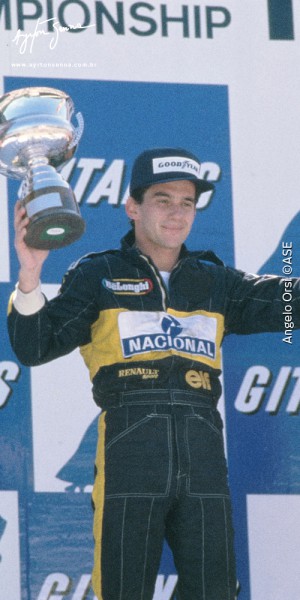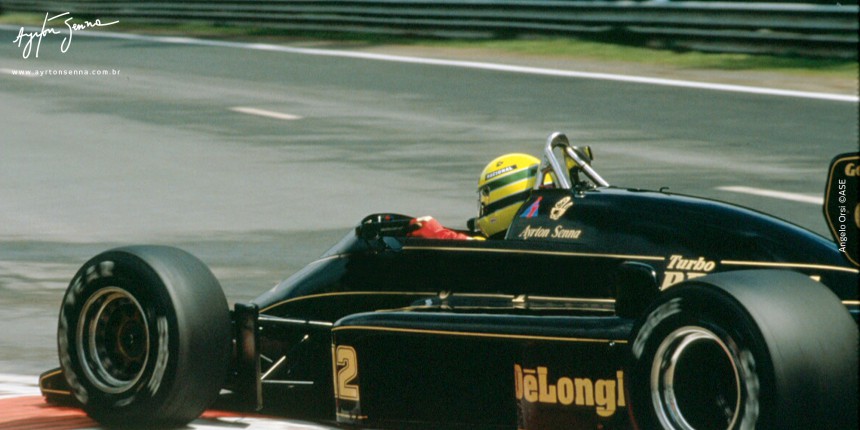Two weeks after the Monaco Grand Prix, where Ayrton Senna made it to the podium in third place, the 1986 F1 season moved on to Belgium, more specifically Spa-Francorchamps, a very demanding circuit – mainly because its uphill and downhill sections and many treacherous corners, like Eau Rouge, extremely difficult to negotiate at maximum speed. Bottom-line: it’s a race for great drivers, equipped with great engines.
The Lotus #12 had a master driver, without a doubt, but the most effective engine under those conditions was Williams-Honda’s, driven by Nigel Mansell and Nelson Piquet.
Before the race, the paddock at spa was rocked by tragic news: Elio de Angelis, Senna’s teammate at Lotus in the previous year, had passed away after suffering an accident with his Brabham in a test at Paul-Ricard (France), in the week that preceded the Belgian GP.
During the qualifying session, Ayrton Senna secured the fourth position on the starting grid and kept his spirits high. Piquet took the pole position, followed – rather surprisingly – by Benetton’s Gerhard Berger. On the second row, next to the Brazilian, Alain Prost (McLaren) held the third spot. Mansell would start in a humble fifth place.
On Sunday, the only ones to score would be those who were physically well prepared, made no mistakes and did not push their cars too hard. Senna based his race strategy on this assumption.
Senna had a perfect start. He made sure to be on the outside of the La Source corner, while Berger and Prost fought for space on the inside and ended up hitting one another. All the better for Senna, who overtook both of them and put his Lotus in second place, while Piquet kept the lead.
Nigel Mansell became third and Stefan Johansson (Ferrari) jumped to fourth. Meanwhile, Berger and Prost went back to their pit boxes, but only the Frenchman, the championship leader at the time, would be able to recover in the race after fixing his broken spoiler.
At the front of the pack, Mansell took advantage of his Honda engine to keep up with Senna. But, on the fourth lap, the Britton spun out and was passed by Johansson. The “Lion” didn’t give up and took back the third place ten laps later, with a beautiful maneuver.
At the end of the 15th lap, Piquet had problems with his William’s Honda engine and he was forced to stop. Senna inherited the lead, but he would soon be pressured by Mansell, who was driving a really fast car.
Before the 20th lap started, Senna was just 2s3 ahead of Mansell. In a clever strategy, Williams called for a pit-stop by the Britton one lap before the Brazilian made his. Lotus was 1s5 slower than its rival team. Besides, Senna was held back by a backmarker (Frenchman Philippe Streiff) on the lap he was going to make the pit-stop. The result: Mansell came back ahead.
Johansson took the lead, but just for two laps, until he also made a pit-stop and was forced to settle for third place.
For the remainder of the race, Ayrton Senna drove his Lotus with great skill through the challenging course, being forced to accelerate less to save on gas for the final laps. The Brazilian knew that, with Prost’s sixth place finish, he would become the championship’s leader.
He didn’t secure a win, but came in second, scoring important points for the championship and a guaranteed inclusion at the podium party.
With that result, Senna jumped to the top of the standings, with 25 points, while Prost had 23. Mansell climbed to third, with 18 points, while Nelson Piquet stalled at 15.
The following race would take place in Montreal, Canada, three weeks later.


